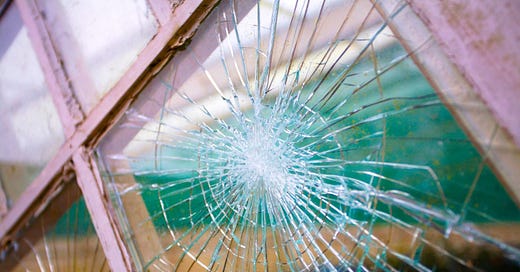The Broken-Window Fallacy: The Economic Myth That Won't Die
Why the most dangerous economic fallacy continues to shape policy and public opinion—and what it means for your financial future
The Most Persistent Economic Error
There's a simple story that has been told for generations to explain a fundamental economic truth. A boy throws a brick through a shopkeeper's window. As a crowd gathers to observe the damage, someone offers a silver lining: "At least this will provide work for the glazier!" Soon, several onlookers are discussing how the broken window might actually be good for the economy—creating jobs, stimulating spending, and generating economic activity.
This seemingly intuitive observation contains what Frédéric Bastiat identified in 1850 as perhaps the most persistent and dangerous fallacy in economic thinking: the broken-window fallacy. It remains "more rampant now than at any time in the past," perpetuated by politicians, media figures, corporate leaders, and even economists who should know better.
Why does this fallacy persist, and why should you care? Because this flawed thinking shapes government policies that directly impact your financial well-being, from inflationary spending to regulatory overreach. Understanding this fallacy inoculates you against economic misinformation and helps you make better personal financial decisions.
The Broken-Window Fallacy Explained
The essence of the broken-window fallacy is seductively simple: it confuses destruction with creation by focusing only on what is immediately visible while ignoring what remains unseen.
In our window example, everyone sees the glazier receive payment to repair the window. This transaction is visible and measurable. What remains invisible is what the shopkeeper would have done with that money had the window not been broken. Perhaps he would have purchased new inventory, invested in equipment, or bought a new suit—all transactions that would have benefited other businesses without requiring the destruction of his property.
The fallacy leads people to believe that money circulating after destruction represents new economic activity, when it actually represents a diversion of resources that would have been directed elsewhere. The shopkeeper is poorer by exactly the cost of one window, and society has merely replaced something that already existed rather than creating something new.
In short, destruction never creates wealth; it only redistributes it, and always with a net loss.
From Broken Windows to Broken Economies: Modern Applications
While few seriously advocate for random vandalism as economic policy, this same fallacious thinking appears in sophisticated disguise throughout modern economic and political discourse.
Keep reading with a 7-day free trial
Subscribe to The Voluntarist to keep reading this post and get 7 days of free access to the full post archives.




